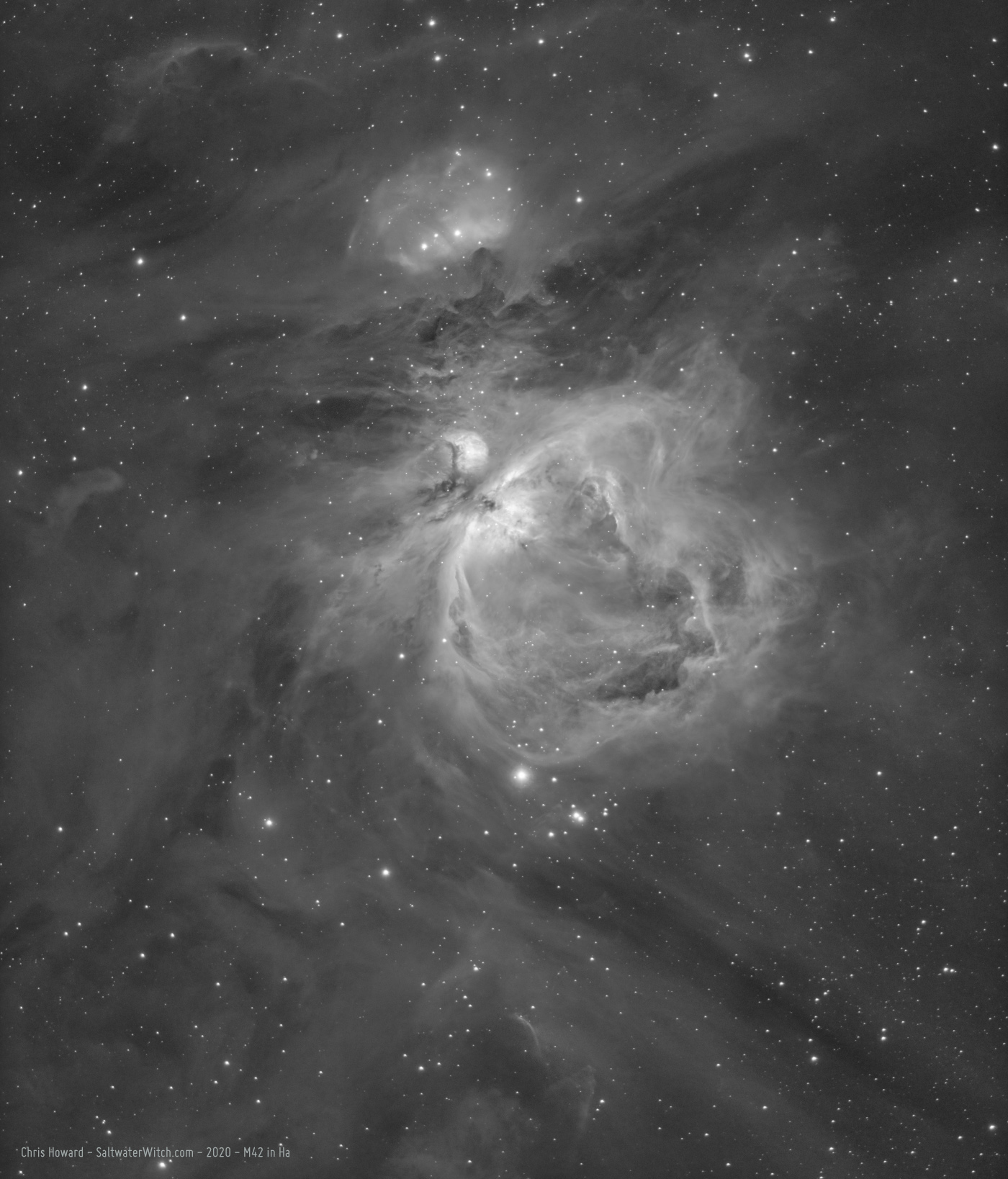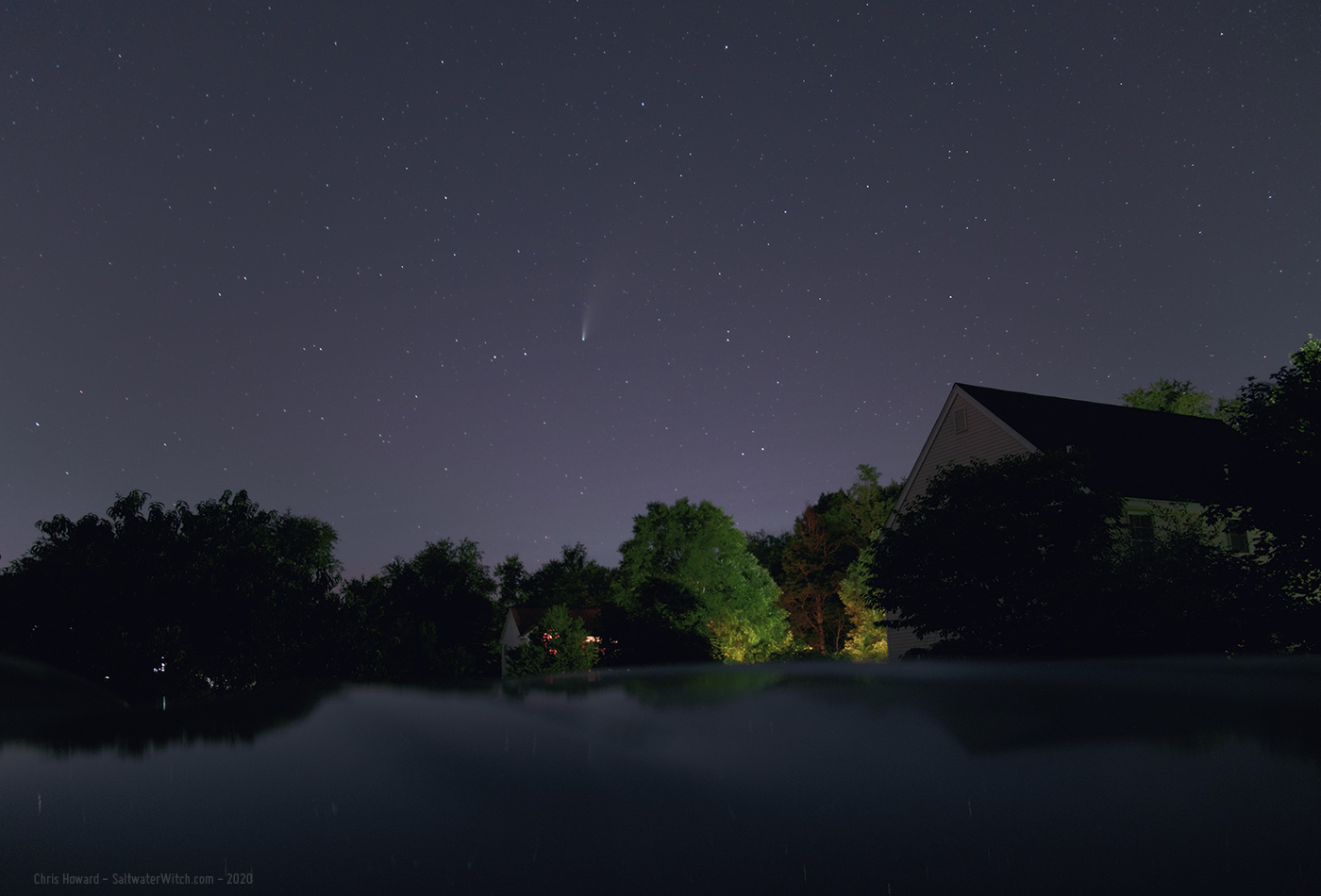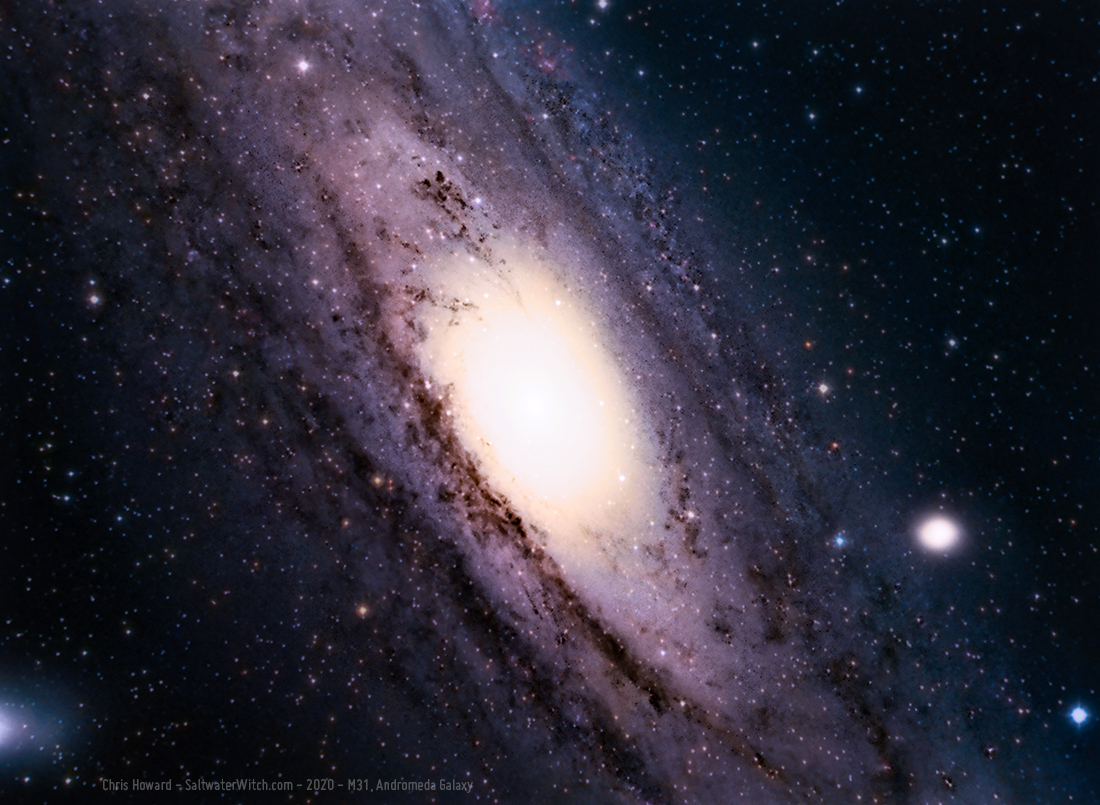The Orion Nebula in Hydrogen-alpha
I have to capture M42, M43, NGC 1977, the Orion, De Mairan's, and Running Man Nebulae at least once a year, and now through December is when the Constellation is high in the sky and still early enough be awake--I captured most of the 52 subs that went into this shot between 11:30 and 2am. This is just one filter's worth. I have to go back and either take OIII and SII or Blue and Green, using this Ha capture for the Red channel in RGB.
Imaging session notes: 52 x 240 second subs + 50 x 10 second subs for the Trapezium, stacked in DSS, processed in PS 2021. SkyWatcher EQ6-R Pro mount, William Optics GT81 Apochromatic Refractor 392mm at f/4.7, ZWO ASI1600MM-Pro monochrome camera, Astronomik 6nm Ha filter, Controller: Raspberry Pi 4 4GB / 128GB running INDI/KStars/Ekos.

Posted November 10, 2020
California Nebula in Hydrogen-alpha
The California Nebula (NGC 1499) in the Constellation Perseus is relatively close to us, about 1000 lightyears away in the Orion Arm of our galaxy (Milky Way), and it's roughly a 100 lightyears in length, so what you see here, top to bottom, is about 600 trillion miles of ionized hydrogen. NGC 1499 is a good-sized emission nebula, about 2.5° in length from our view on Earth. To put that into perspective, a full moon is 1/2°, so the California Nebula is about 5 full moons long in the sky.
Imaging session notes: 50 x 240 second subs, stacked in DSS, processed in PS 2021. SkyWatcher EQ6-R Pro mount, William Optics GT81 Apochromatic Refractor 392mm at f/4.7, ZWO ASI1600MM-Pro monochrome camera, Astronomik 6nm Ha filter, Controller: Raspberry Pi 4 4GB / 128GB running INDI/KStars/Ekos.

Posted November 10, 2020
Try out the new pier with some imaging
The weather has not been cooperative but I have set up the SkyWatcher EQ6-R Pro on the new backyard pier, along with the William Optics GT81 and my narrowband imaging train. I'm using the latest (v1.54) Stellarmate for these tests, but not in Stellarmate mode (not using the app). I'm remoting into the machine, running on a Raspberry Pi 4 4GB board with 128GB, and just running KStars/Ekos there. I used the QHY Polemaster on the Mate to polar align, and that was easy. My one imaging test so far with NGC 281 (Sh2-184) the Pacman Nebula in Hydrogen-alpha worked well enough with 7 240-second Ha subs stacked in DSS and processed in Photoshop 2021. No calibration frames. There wasn't time before the clouds drifted in. My next test is to use SharpCap Pro's Polar Alignment functions, and see where that gets me.
Some shots from the the night of November 7:



Posted November 9, 2020
There's still time to see NEOWISE
Here's the view a few steps from our front door, with Comet C/2020 F3 (NEOWISE) still very clear in the sky, and if you can shoot 10 - 20 second exposures on your camera, even better! That's Ursa Major (the Big Dipper) at the top center--most of it. This is 24mm on the Nikon D750, and it's pretty close to what you will see with your eyes.

Here's another, using the car roof to keep the camera still:

Posted July 21, 2020
Andromeda's core
Something to think about on a Friday night: the Andromeda Galaxy (M31) is moving toward our galaxy, the Milky Way, at a little over 400,000 kilometers per hour, and the supermassive black hole at the center of Andromeda is 100 million times the mass of our sun. Note: at that speed Andromeda will still take 4 billion years to get here. I figure we'll be beyond Kardashev 3 in the next 3 - 4 million years, and we'll simply move our galaxy out of the way.

Posted July 17, 2020
Early moon rise with Venus and Aldebaran
Up early this morning and out in the backyard to get some shots of the moon and Venus--and Aldebaran! This is one shot with the Nikon D750 and the 70-300mm - focal length 95mm, 1.6 second exp at f/10, ISO 1600

Posted July 17, 2020
Gulf of Mexico in NGC 7000
Here's another crop from the stacked 41 x 240 second subs of the North America Nebula (NGC 7000) in Ha, this time the "Gulf of Mexico" region, with some fantastic dark nebulae. This is a slightly narrower field of view than the Cygnus Wall, and so we're only looking at about 100 trillion miles from one side to the other. When you read that atomic hydrogen, the lightest element, makes up 75% of the baryonic mass of the universe, this is what they're talking about. Almost everything you see in this frame, dark and light clouds--even the stars, is hydrogen in various forms.

Posted July 12, 2020
Cygnus Wall in NGC 7000
I'm going to retake the last set of hydrogen-alpha frames for NGC7000 because the stars are a bit wonky, but the clouds of ionized hydrogen and massive structures of dark interstellar dust still look beautiful in this stacked set of 41 exposures. Here's a crop of the "Cygnus Wall" in NGC 7000. In this field of view, you're looking at about 118 trillion miles of dense clouds of interstellar ionized hydrogen. NGC 7000 is about 1600 lightyears aways, and the "Cygnus Wall" is about 20 light years long--about 118 trillion miles.

